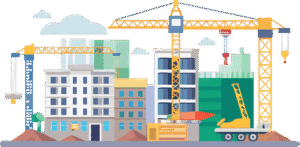In the immediate aftermath of the pandemic, a new asset class stepped into the spotlight. At a time when people wanted indoor and outdoor space to hunker down at home and when demand for other asset classes waned, build-to-rent home (BTR) communities became the biggest opportunity in commercial real estate. In 2021 and 2022, BTR transaction volume grew a staggering 250% to $2.4 billion, and institutional capital flooded into the market. By 2023, Wall Street real estate firms had purchased billions of dollars in BTR communities, betting on the future of the single-family rental market.
In the last couple of years—as the commercial real estate market has recovered—the headlines about BTR growth have faded, but activity and fervor for the sector have not. It remains one of the most vibrant and promising asset classes for both investors and developers.
Here is a look inside the exciting last year for BTR development, and why the asset class is just getting started.
Build-to-Rent Deliveries Break Records
Build-to-rent new construction deliveries illustrate the massive potential for the budding sector. In 2024, developers delivered 39,000 new single-family rental homes to the market, a 15.5% year-over-year increase. By comparison, before the pandemic, new BTR deliveries averaged 7,000 units annually. The BTR inventory has doubled in size from 2019 to 2024, and construction activity now represents 10% of the total new construction activity in the US. That is impressive for an asset class that only just started gaining momentum a few years ago. Already, there are more than 14 million single-family rental units available in the market.
The pipeline is continuing to grow. There are an additional 110,000 units under construction this year, which will significantly increase the single-family rental stock. Fundamentals support increased construction activity. The market—even with significant new deliveries—has 1.5% rent growth and nearly 7% vacancy rate.
The new construction activity also represents a shift in the ownership profile of BTR communities. The single-family rental market has typically been dominated by small mom-and-pop owners, with 10 homes or less to rent out. Now, the share of larger, more sophisticated owners with 1,000-plus homes has grown significantly, illustrating the institutionalization of the asset class. Still, less than 2% of the asset class is institutionally owned. However, experts estimate that by 2030, institutional owners will own 40% of the single-family rental market in the country, or 7.6 million units.
Maximizing Value in Key Markets
The single-family rental market is giving commercial real estate developers an opportunity to tap into key markets and demand trends. Geographically, single-family housing is thriving in the top growth markets in the country, largely based in the South and the Sun Belt region. Markets like Phoenix, Atlanta, Dallas, and Houston are all hotspots for BTR new construction activity. In addition, Charlotte, Jacksonville, Huntsville, Columbus, and Tampa have all added more than 1,000 new BTR units in the last year.
These markets offer a combination of population growth, family formation, strong rent growth that outpaces the national average, and ample land to build a sprawling community. The combination has helped make them the ideal place for new BTR construction and where most of it has landed in the last few years. In addition, high-barrier-to-entry coastal markets like California have also been a hotspot for BTR community development. The state is notoriously expensive for new development, but it still has a pipeline of more than 2,200 new BTR units, showing healthy momentum for the asset class.
Beyond geographic markets, BTR communities are also an opportunity for real estate investors and developers to respond to the housing crisis. For-sale housing prices have prohibited many people from accessing the neighborhoods they want for family formation. Yet, new construction costs make it difficult to develop more affordable for-sale homes. In fact, the monthly mortgage of a newly purchased single-family home is 52% higher than a similar rental property in the market. BTR communities satisfy the demand for families that are ready for homeownership and want their own space, but in an investment strategy that makes the most sense for investors and developers. This dynamic has been the catalyst for the booming growth in the BTR space.
Developers Find Opportunity and Challenges
The fundamentals in the BTR sector are phenomenal, and the demand certainly warrants increased new development activity. However, although the BTR investment strategy is a phenomenal opportunity for investors, developers will find a similar set of construction challenges as traditional multifamily. Land prices and limited land availability, labor shortages, high construction materials costs, and elevated interest rates are also difficult challenges for BTR developers to navigate, even with higher rent potential per door. In addition, the cost of a BTR property can be a barrier for many developers. A 200-unit BTR community typically requires around $60 million in capital. Institutional investors that want to scale their BTR portfolios quickly will need upwards of $1 billion.
Despite some of the challenges, institutional investors remain bullish on the BTR market, and are actively looking for opportunities to gain exposure. “We think we’re really in the early stages of what could be a pretty significant, almost new asset class,” AvalonBay Chief Investment Officer Matt Birenbaum told the Wall Street Journal. AvalonBay is one of the firms that plans to invest $1 billion in the asset class over the near term.
Modern real estate development software like Northspyre can help development project managers effectively manage a massive BTR development project and scale the portfolio. Northspyre leverages automation, analytics, and AI to allow for budgeting, minimizing risk of overruns and keeping projects on set timelines. The platform automates invoicing and contracts to streamline processes and create efficiencies. As a result, many developers find they are able to reduce overages by 66% and decrease 80% of manual work. But it isn’t only the cost savings. The program’s dashboard centralizes key project data to offer developers full visibility on all important financial components of a project. With everything at your fingertips, developers can unlock opportunities to scale the portfolio or pursue large-scale developments.
There are some challenges in the current market, but there are also opportunities. With the right tool kit and information, developers can remain active and competitive in any environment.
Book a Northspyre demo and learn how the platform can help your team identify key project opportunities and scale your portfolio.



